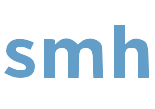Plagiarism is presenting someone else's ideas or works as your own. It is important to acknowledge and credit their work when referencing it in your work. This is why citations are important.
Min SK. Plagiarism in Medical Scientific Research: Can Continuing Education and Alarming Prevent This Misconduct?. Vasc Specialist Int. 2020;36(2):53-56. doi:10.5758/vsi.203621
CrisN-2024. Plagiarism in Healthcare Education - A Critical Concern. American Healthcare Institute. Published September 18, 2024. https://amhealthinstitute.com/blog/plagiarism-in-healthcare-education-a-critical-concern/
Avoiding Plagiarism, Self-plagiarism, and Other Questionable Writing Practices: A Guide to Ethical Writing from the Office of Research Integrity of the Department of Health and Human Services
Plagiarism in Academic Writing: How to Identify and Avoid It Plagiarism in Academic Writing: from AJE (American Journal Experts) Scholar
